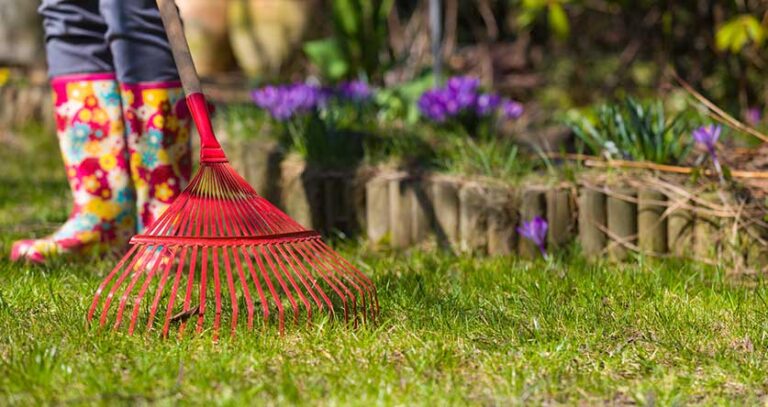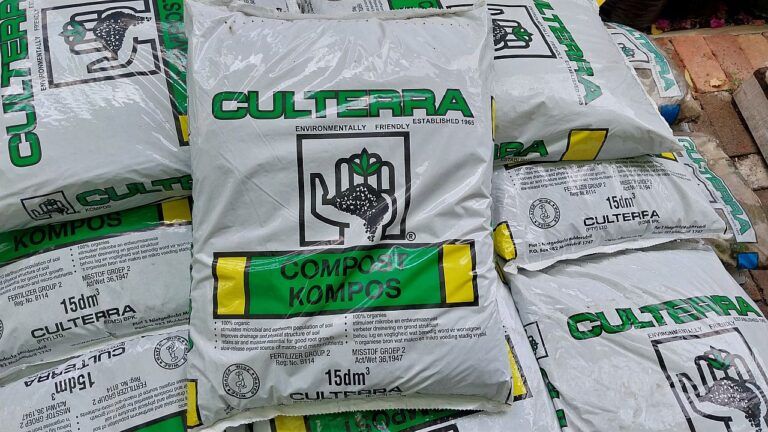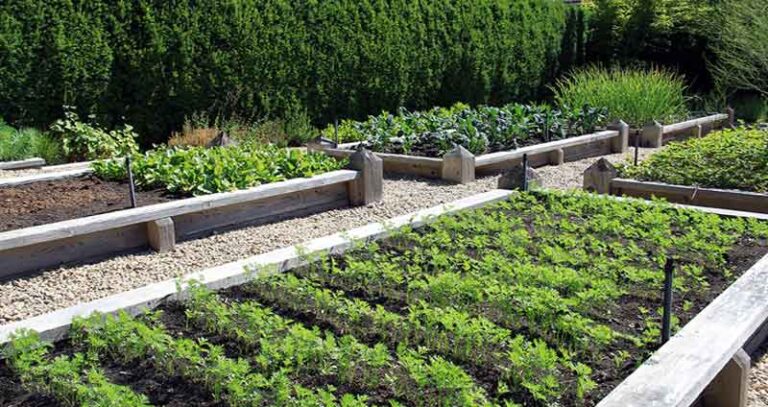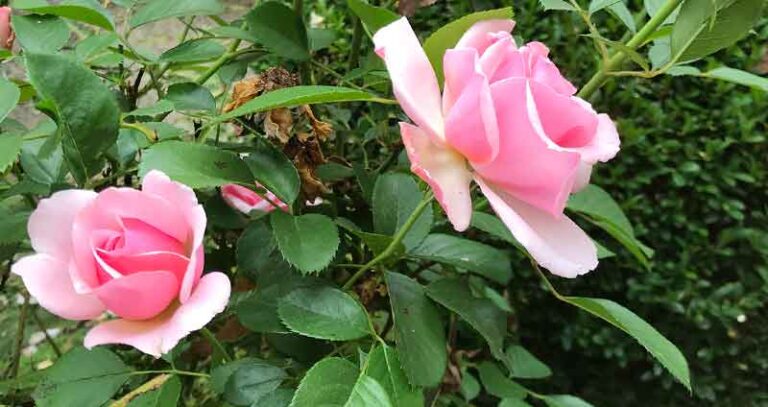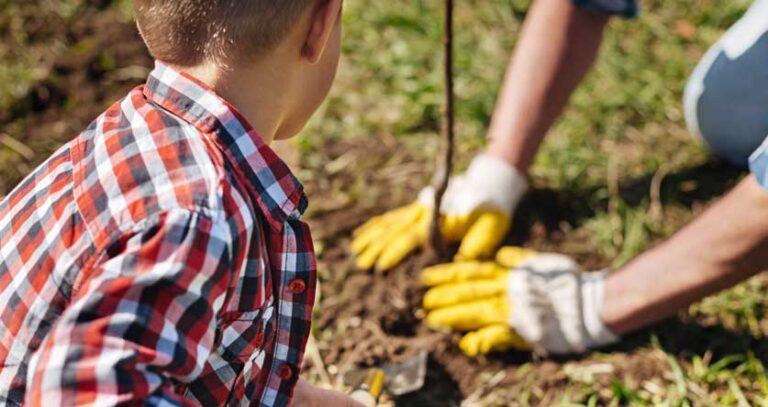Can You Use Compost As Soil (Planting Directly Into Compost)
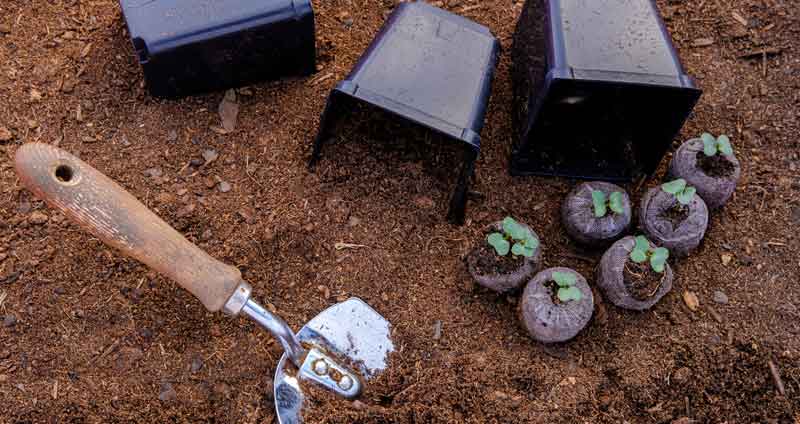
Can you grow in compost alone?
It’s a fairly common question and a bit of a mystery for most of us.
Compost provides so many benefits, so why not just plant directly into compost without soil?
Will you end up with more bountiful crops this way?
In this article, I’ll explain what you need to know about growing in pure compost and how to get the best out of this kind of arrangement.
Can you plant directly into compost?
The general recommendation is not to plant in compost only. But there are circumstances where this is actually possible with success. Mostly it depends on the type of plant you want to grow.
Have you ever seen a stray plant growing in your compost pile?
Maybe some cucumbers have migrated, or tomato seeds have started to sprout?
Isn’t this proof that planting in pure compost can work?
Well, yes and no.
Even if some people manage to grow with just compost, there are a few caveats to this situation.
For a start, it’s helpful to understand the differences between compost and soil. Soil is mostly mineral with some organic content. Whereas compost is pure organic matter. Topsoil can be poor in quality which is why it benefits from additional organic materials in the form of compost.
The soil provides a stable structure and a source of mineral nutrients. In contrast, compost improves the biological soil life and the availability of nutrients. It also amends the water retention and drainage characteristics of the soil.
The two things combined (soil and compost) tend to create a better environment for growing most plants.
Planting in just compost
I’ve seen plenty of people do this. The setup is slightly different each time, but they are seeing pretty good results.
Sometimes this happens by chance, for example, when “volunteer” plants crop up in your compost pile. Other times this is part of a composting experiment or deliberate setup.
What’s less obvious to some people is the kind of plants they are having success with. These are plants that DO thrive in the environment created by using pure compost as a planting medium.
Here’s what I’ve observed. Most of the time, these plants are “heavy feeders.” The type that enjoys a nutrient-dense growing medium. Things like tomatoes and peppers. Summer squash plants like zucchini, cucumbers, etc.
These plants also have characteristics and needs which help them thrive in compost.
Issues that might cause problems when planting in compost include:
- The height and weight of the plants
- Moisture demands
- Heat tolerance
- Acidity requirements
- The maturity of the compost
Tall, heavy plants will not do well growing in compost. Compost is light compared to soil and has less structural integrity to anchor the roots properly. The same goes for very tall plants. Their roots simply won’t have enough grasp and would fall over.
Compost is well known for its capacity to hold water like a sponge, which creates a nice moist environment for root systems. But compost is also very open-structured with lots of cavities and air pockets. This means it can just as quickly dry out if there is nothing to help contain moisture.
Compost is a biologically active substance. The decomposition process involves millions of microorganisms that generate heat as they feed and grow. Therefore, plants growing in compost need a certain heat tolerance to survive.
Also, depending on the level of maturity of the compost, it can be more or less acidic. It usually starts acidic and gradually becomes more neutral as it matures.
Some plants prefer acidic conditions. Like the examples of heavy-feeders listed above, tomatoes, squash plants, peppers, and cucumbers are all acid-loving! So they will do well in compost that is still quite active and slightly acidic. (Other plants and vegetables generally prefer neutral soil with a pH between 6-7).
The pH level of compost is quite tricky to predict. So if you’re going to try planting in compost, it’s a good idea to test the acidity first. You can do this easily using an electric pH meter like this (Amazon).
This brings us to another consideration about the maturity of the compost. “Fresher” compost materials are still in the process of being broken down by composting microbes. These organisms require nitrogen to live and will take up all the available nitrogen they can from the compost materials. This means fewer nutrients for plants.
If compost is immature, it could do more harm than good.
Can I plant in compost only?
Yes, planting in compost alone is possible under certain conditions. This method works better with low-spreading plants that prefer slightly acidic conditions. They should also have good heat tolerance and prefer well-draining soil.
Anything that grows close to the ground, like squash, will thrive in pure compost. The plants you chose should also be “above-ground” plants, not root crops like carrots.
Often the plants that perform well are the type that prefers well-drained soil. Remember, even if compost retains moisture, it also drains easily.
Using compost as soil is possible. However, if you’d like to use compost instead of soil, make sure it is well-matured and finished compost. This will be less biologically active.
As a result, it won’t be as hot, and more nitrogen will be available for your plants.
Growing vegetables in pure compost
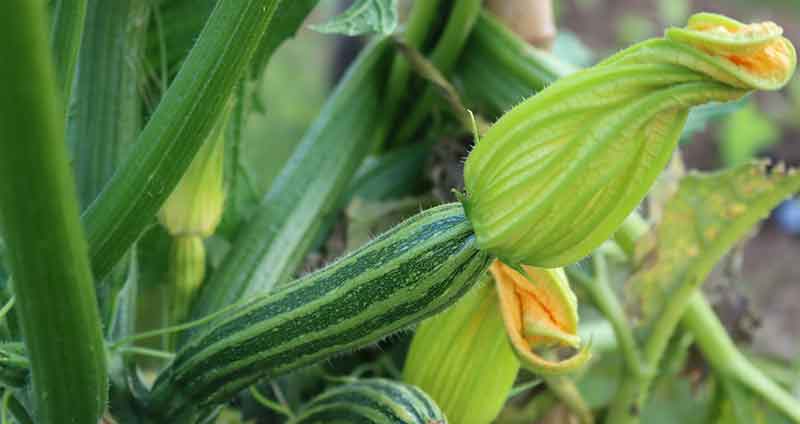
Planting and growing vegetables directly into compost is possible, and certain crops thrive in these conditions.
The same considerations mentioned above apply, but compaction is another issue to be aware of when using compost in place of topsoil.
Because compost is organic, it continues to decompose at a slow rate. As it breaks down, the particle size diminishes. This leads to a more compact volume after a season of growing plants. A layer of compost can reduce height by 60% in a year.
For this reason, you need to replace the compost annually. The most opportune time to do this is in the autumn when crops have been cleared.
Crops that thrive in compost are heavy feeders. They have a relatively short life span, so they need lots of nutrients quickly. In the brief time between growth and harvest, these nutrient-hungry plants take complete advantage of the nutrients in the compost before the volume reduces.
A few examples include:
- Broccoli
- Cabbage
- Cauliflower
- Cucumber
- Eggplants
- Peppers
- Pumpkins
- Strawberry
- Tomatoes
- Watermelon
- Zucchini
Another way to grow vegetables in compost is what’s known as the “no-dig” method. (This is very similar to the lasagna gardening technique).
No dig is where you apply a layer of compost directly onto the ground and then plant without disturbing the underlying soil. No need to dig the compost into the soil. You just leave it on top like mulch.
This is usually done in the autumn to prepare for the following spring planting season. The compost enriches the soil and breaks down further during that time. Worms can access the fresh compost, and the natural ecosystem of soil life continues to live and thrive. The result is healthy soil with a top layer that is easy to plant and work.
Growing vegetables in a compost pile
Sometimes this happens by accident!
A rogue vegetable sprouts in your compost pile and looks perfectly happy.
Although this is a somewhat unconventional way of using a compost pile, it can be done. So long as you take into account, the considerations previously mentioned.
This works best in a pile with a container, such as an open wooden bin made of pallets. The container helps retain some of the moisture in the pile. Otherwise, just keep an eye on the moisture level in the heap during growth.
Stick to quick-growing crops that prefer slightly acidic soil for best results.
Your plants can be crowded together, and they’ll be perfectly happy. The high-nutrient content of the organic matter provides plenty of food.
Why not give it a try!
Can I use compost instead of topsoil?
Compost makes a good substitute for topsoil.
Keep in mind that store-bought “topsoil” is often not pure topsoil!
Topsoil sold in bags is sometimes amended with compost. It might even be enriched with fertilizers (read the labels to know exactly what you’re getting).
Compost might be better than topsoil in some cases. The quality of topsoil can vary greatly. Companies recover soil from all sorts of different places, and there’s a big difference in quality from location to location.
Conclusion: Compost instead of soil
While it is possible to grow plants directly in compost, this is an idea that most experts do not advise. This is because it doesn’t always work well for all types of plants.
Applying compost to your garden soil is a better alternative for all-around plant health. Soil function can be vastly improved with a relatively low addition of organic matter – about 5% is enough for healthy soil.
Related reading: ways to use compost…
If you’re going to use compost instead of soil, you should also make sure to use only fully processed compost. It should be black and crumbly with a sweet, rich, earthy scent. Compost that contains identifiable food scraps or that has an acidic smell to it isn’t fully processed yet, and should not be used for planting.


